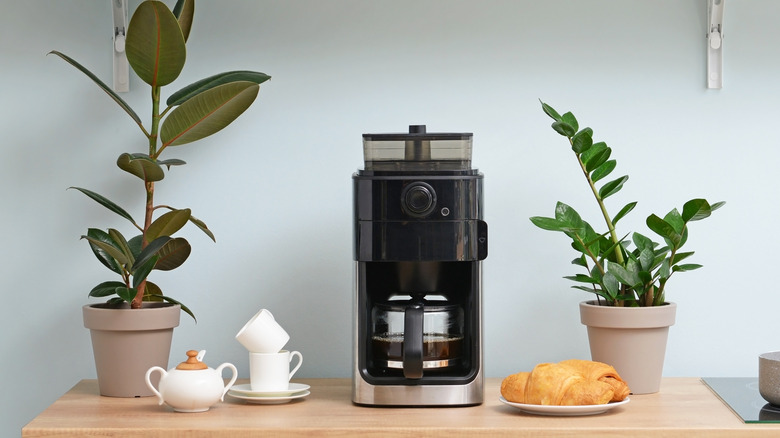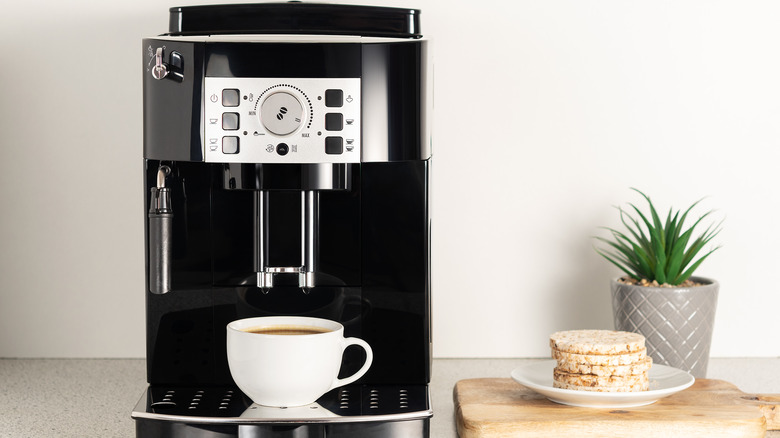Throw Your Coffee Maker Away Immediately If You Notice This
Everyone knows it's important to keep your coffee maker clean, but what happens if you don't? Without regular cleaning and descaling, your coffee maker has the potential to grow bacteria like yeast and mold. A study done by the National Sanitation Foundation found that 50% of sampled coffee maker water reservoirs had mold or yeast. While you may be cleaning the pot from your coffee maker, you also need to make sure you're cleaning the water reservoir. That's where yeast and mold can begin growing.
If you continue to use a coffee maker dirty with yeast or mold, anyone who drinks coffee from that machine will be putting their health at risk. Food-borne yeast and mold can cause sensitivity in people with allergies and can even lead to infections, according to the U.S. Food & Drug Administration. As long as you stick to a regular cleaning schedule, you can prevent your coffee maker from harboring bacteria.
Clean every one to six months
It's easier to prevent yeast and mold than to get rid of them. In an interview with USA Today, Lisa Yakas, the senior product manager of Consumer Products at NSF International, explained how the water reservoir in a coffee maker is often the dirtiest part of a kitchen. She recommended emptying unused water from the reservoir and leaving the lid off so it can dry and prevent bacteria from growing.
Depending on how often you use your coffee machine you should be cleaning and descaling it regularly. Yakas recommended cleaning every one to six months and following the manufacturer's directions on how to do so. Descaling is also important because it can affect the taste of your coffee. You'll know it's been too long since descaling if your coffee starts to taste too bitter or if your machine has an acrid smell (via Urnex). The heat from a coffee maker can also help to kill most germs. Although, it's best to still clean your machine.

